Most long-running horror franchises have that one installment which was legitimately supposed to, but hilariously did not end the franchise. Some have several of them. Few, however, have tried to ends things as quickly as Halloween. Halloween II, i.e., the one set in the hospital, truly was supposed to be it. By the end, Michael and Dr. Loomis get blown up real nice, and Laurie and her love interest survive to see another day. End of franchise. Let's move on. I dunno, maybe try witches and exploding pumpkin heads next time.
But what's that expression about God laughing when you try to make plans? In Hollywood, it's more like producers (and sometimes audiences) laughing in your face if you ever dare to leave money on the table. Michael would be back.
Not that anyone knew that in 1981. Instead, all Moustapha Akkad, Irwin Yablans, John Carpenter and Debra Hill wanted to do was to make a little more money off of the slasher gold rush they'd inadvertently started, and then bow out. Doing so, though, meant making some controversial story decisions, such as adding just a little too much to Michael's backstory and going over the director's' head to up the gore factor. The resulting sequel they produced is inferior to the original, but it's still among the best in the franchise.
Here are 9 things you might not know about Halloween II:
1. They never intended to make a sequel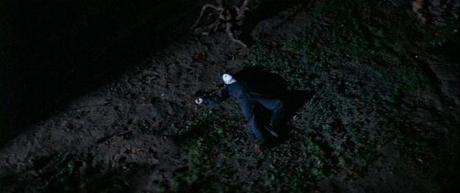
One odd commonality between the three biggest slasher franchises - Halloween, Friday the 13th and Nightmare on Elm Street - is they were never intended to be franchises even though their first films all feature endings which seem designed to set up a sequel. Michael gets up and walks away at the end of Halloween. Something, possibly a somehow still-alive Jason Vorhees, attacks Alice at the end of Friday the 13th. Freddy possesses Glen's car and probably kills Nancy's mom at the end of Elm Street.
To modern eyes, oh, obviously they were leaving the door open for further installments. However, the film industry was far less sequel and franchise-prone back then. Filmmakers didn't think in those terms because sequels were still very rare and almost always critical and financial failures. So, Friday's ending was less about sequel table-setting and more about ripping off Carrie's one final scare. Elm Street' s ending was a case of Wes Craven throwing a bone to the producer who hated the original idea to have a happy ending.
Halloween's ending was purely an "evil never dies" affectation, always scripted to end on the Laurie/Loomis "Was that the bogeyman?" exchange, but prolonged in the editing room. As the film's editor Tommy Lee Wallace told Reel Terror:
Almost as an afterthought we had him get up and walk away and shot some extra footage of the blank ground. Then the other empty shots were stolen from other sequences. That was not planned on film. I think it was just a good way of drawing the curtain and saying, "This was just a story, but now it's in your face, it's on your street, it's everywhere. That's a nice way to end a horror movie."
It's also, as it turns out, a nice way to leave audiences wanting more.
2. Turning Laurie into Michael's sister was the result of sleep deprivation, too much alcohol and writer's block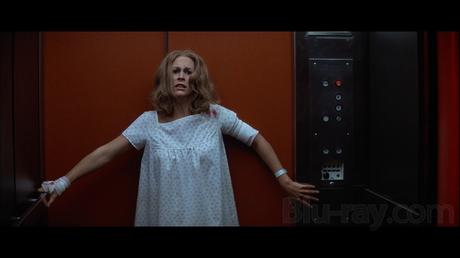 As a standalone horror movie, Halloween is simply the story of an unknowable and oddly unkillable escaped mental patient wreaking havoc on a couple of teenagers in small town suburbia for no apparent reason other than, um, he's evil? As part of a double feature with Halloween II, though, it's the story of a boy who killed his older sister and then returned home years later to kill his younger sister, stalking her where she lived and then following her to the hospital after she managed to repel his first attack. This pragmatic story decision regrettably set the franchise up for a series of sequels in which Michael keeps trying to kill his relatives.
As a standalone horror movie, Halloween is simply the story of an unknowable and oddly unkillable escaped mental patient wreaking havoc on a couple of teenagers in small town suburbia for no apparent reason other than, um, he's evil? As part of a double feature with Halloween II, though, it's the story of a boy who killed his older sister and then returned home years later to kill his younger sister, stalking her where she lived and then following her to the hospital after she managed to repel his first attack. This pragmatic story decision regrettably set the franchise up for a series of sequels in which Michael keeps trying to kill his relatives.
They'd accidentally given their monster an actual motive, beyond simply to scare and maim, and sacrificed Michael's power as a cinematic bogeyman in the process. Carpenter, who co-wrote the script with Debra Hill, has long maintained this was simply the result of late nights, too many cans of beer and a mad case of writer's block. He didn't know what else to do with the sequel, mostly because he didn't want to make the sequel in the first place, as he told Deadline in 2014:
I didn't think there was any more story, and I didn't want to do it again. All of my ideas were for the first Halloween - there shouldn't have been any more! [...] Michael Myers was an absence of character. And yet all the sequels are trying to explain that. That's silliness - it just misses the whole point of the first movie, to me. He's part person, part supernatural force. The sequels rooted around in motivation. I thought that was a mistake. However, I couldn't stop them from making sequels. So my agents said, 'Why don't you become an executive producer and you can share the revenue?' But I had to write the second movie, and every night I sat there and wrote with a six pack of beer trying to get through this thing. And I didn't do a very good job.
With Carpenter and Jamie Lee Curtis reuniting and teaming with Blumhouse for a new Halloween movie (due in 2018) which will reportedly ignore all of the sequels, including Halloween II, the "Laurie is Michael's sister" plot reveal might just be retconned out of existence, for better or worse.
3. Additional story ideas included setting it years later in a high rise apartment building and/or maybe doing it in 3DThree years had passed in-between movies. So, their natural impulse was to build that into the script and set the entire film inside a high rise apartment building where Michael would have tracked Laurie to. From "The Night He Came Home" to "The Night He Was Buzzed Up"? However, this idea was dropped during story meetings in favor a direct sequel picking up literally a minute after the first film.
As for 3D, Debra Hill told Fangoria, "We investigated a number of 3-D processes for Halloween, but they were far too expensive for this particular project. Also, most of the projects we do involve a lot of night shooting - evil lurks at night. It's hard to do that in 3-D." Friday the 13th Part 3 found that out the hard way a year later.
4. Blame the gore on John Carpenter, not the film's actual director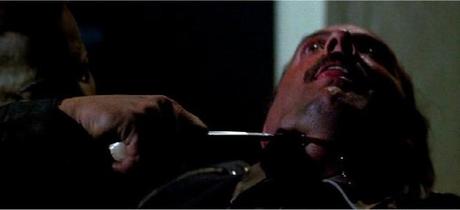
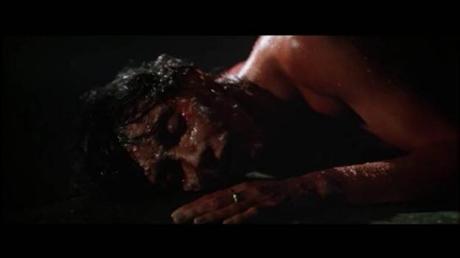
By the time Halloween II arrived in 1981, theaters had become overrun with low-budget, low-quality slasher fare like The Burning, New Years Eve, Prom Night, Christmas Evil, My Bloody Valentine, Happy Birthday to Me, Graduation Day, Terror Train, Final Exam, and, most blatantly, Friday the 13th Part 1 & 2. As Tommy Lee Wallace told 25 Years of Terror, "Other movies, sort of imitators, had come along and got their business off of sheer gore. John felt the pressures of the marketplace. So, he wrote Halloween II to that marketplace."
However, it was a case of the original imitating the imitators, like if Pearl Jam wrote songs to sound more like Creed in the late 90s or if Stephen King wrote a new novel that blatantly rips off Stranger Things. It's just not a good look, and both Wallace (who was approached to direct Halloween II but turned it down, preferring instead to later direct Halloween III) and Rick Rosenthal (who actually did direct Halloween II) felt favoring gore over suspense in the sequel sacrificed what was so great about the largely bloodless original.
Carpenter, of course, could have just directed the dang thing himself, but he had no interest in doing that. Halloween II was mostly a cash grab for him tailored to and sometimes even exceeding the slasher norms of the day, and he hired the mostly unproven Rosenthal to execute that vision. But Rosenthal made a movie which was more in the spirit of the first Halloween. That's the version of Halloween II anyone who first discovered the film through old Halloween TV marathons saw. The theatrical version, though, is quite a bit more graphic, and Rosenthal has always contended Carpenter went over his head and shot most of those scenes himself.
Here's how Carpenter responded to that accusation in a 1982 interview:
That's a long, long story. That was a project I got involved in as a result of several different kinds of pressure. I had no influence over the direction of the film. I had an influence in the post-production. I saw a rough cut of Halloween II, and it wasn't scary. It was about as scary as Quincy. So we had to do some post-production work to bring it at least up to par with the competition.
The softer TV edit of Halloween II remained commercially unavailable for years, but has recently been included as an extra feature in Shout! Factory's Halloween II Blu-Ray and in Anchor Bay's Limited Edition Halloween Box Set.
5. While making Halloween II they also filmed extra scenes for the TV version of Halloween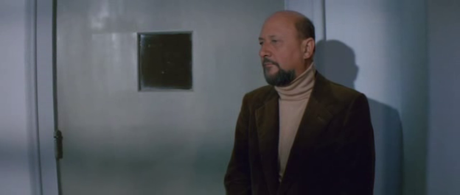
Sticking with the "theatrical versus TV version" theme, those who grew up watching the original Halloween on TV were treated to several scenes which were actually shot during the production of Halloween II. That's because when Halloween made its TV debut on NBC in 1980 the censors forced them to remove practically everything that made it a horror movie. Carpenter and Hill felt this was ridiculous. So, they used Halloween II's 1981 production as an opportunity to film new scenes designed to pad Halloween 's TV running time. These scenes include:
- Dr. Loomis meeting with Smith's Grove officials about Michael in 1963, aka., the infamous "You've fooled them, haven't you Michael? But not me." scene
- Dr. Loomis inspecting Michael's abandoned cell before departing for Haddonfield, aka, when the camera reveals Michael has scratched the word "Sister" into the door.
- Lynda visiting Laurie at her house before departing to babysit.
Bonus fact: Curtis wore a towel in the new scene with Lynda and a wig throughout Halloween II because she'd cut her hair much shorter by that point in 1981.
6. Pamela Susan Shoop cried on the drive to the set when she had to film her nude scene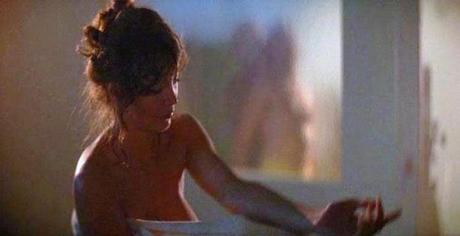
Here's how she explained it on Halloweenmovies.com:
7. They cast a black woman in her 20s to play a character who was written to be a white woman in her 50sWhen the producers wanted to cast me, they had numerous discussions with my agent about what could be seen and not seen. I agreed to be naked only from the waist up. But when we were shooting, the director said he needed me to disrobe to get into the hot tub. He said that it wouldn't be seen on screen, but the camera angle was too difficult to get the shot otherwise.
I understood what he meant; however, it was not in my contract to do that and I was afraid the discarded footage would appear somewhere, so I refused. Debra Hill was on-set and agreed with me. She stuck by me, and in the end - after calls back and forth with my agent - I wore a sort of mold-skin and was not naked. I can tell you that the scene took two days to shoot...and I cried all the way to work the second day. It was hard.
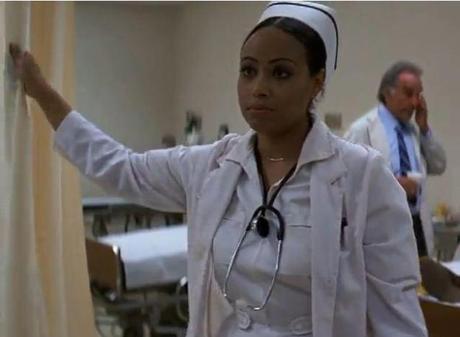
Gloria Gifford's Mrs. Alves is the no-nonsense charge nurse of Haddonfield Memorial Hospital, and, sadly, like most black people in horror movies she doesn't make it to the end. However, she wasn't even supposed to be there in the first place. According to Gifford, "The director, Rick Rosenthal, was in my acting class and recommended me for the audition. Although, I was more than 25 years too young, he felt that I was authoritative enough to pull it off. I auditioned and they felt I was too young, but eventually they came around (they being Debra Hill and Nancy Jacoby)."
Bonus fact: Post- Halloween II, Gifford went on to become a well-known acting coach and American Film Institute instructor whose famous students have included Jenna Elfman and Wonder Woman 's Patty Jenkins.
8. Is that...no, it can't be, but I'd swear that's Dana Carvey in the background. Hold On. That is Dana Carvey!We've all gotta start somewhere, and for Dana Carvey, the future SNL and Wayne's World star, that meant standing and silently shaking his head in response to a reporter's orders during the above scene. Well, isn't that, um, not so special.
9. Sadly, life imitated art when a murderer claimed to have been influenced by Halloween II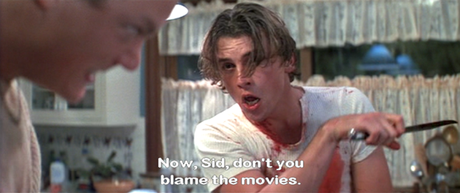
Richard Delmer murdered an elderly couple in Fullerton, California on December 7, 1982, stabbing them 43 times, and during the trial he claimed to have been suffering from hallucinations brought on by viewing Halloween II while under the influence of PCP, marijuana, and alcohol. Since this was a central part of his defense, the entire film was screened for the jury, marking the first time a film had been used as evidence in a trial like that. Delmer was found guilty and sentenced to death, and was later retried (and again found guilty) multiple times for procedural reasons. At the time of this writing, he seems to still be living on Death Row.
BOX OFFICE: $25 million domestic
BUDGET: $2.5 million
CONTEXT: That's barely over half the domestic total of the first Halloween, but in those days sequels weren't supposed to surpass their predecessors. Friday the 13th Part 2 came out the same year and it posted a similar film-to-sequel fall-off. So, no one was expecting another history-setting performance from Halloween II. All they really wanted was extreme profitability (which they got) and maybe a little bit of bragging rights by making more than any other horror movie that year (which is exactly what happened). Hurrah! So, when do we start the sequel? Wait, what sequel? Michael Myers is dead. Right?
INFLATION: With the benefit of 2017 ticket prices, Halloween II would have grossed $82 million domestic, which is Don't Breathe ($89m)/ The Purge: Election Year ($79m) territory for today's horror movies.
Next time, I'll look at the noble (?) failure that is Halloween 3, aka, the one without Michael Myers.
Sources: HalloweenMovies.com, Halloween: 25 Years of Terror, David Konow's Reel Terror: The Scary, Bloody, Gory, Hundred-Year History of Classic Horror Films, Deadline
If you liked this also check out my prior trivia lists about the Friday the 13th and Nightmare on Elm Street franchises, and you can always circle back around to see my other Halloween trivia articles.
Corrections? Questions? Something in-between? Let me know in the comments.

